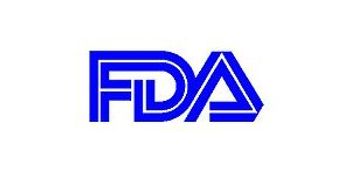
The FDA has approved morphine sulfate extended-release tablets (Arymo ER, Egalet Corporation), a long-term opioid treatment for pain management in cases where alternative treatment options may be inadequate

The FDA has approved morphine sulfate extended-release tablets (Arymo ER, Egalet Corporation), a long-term opioid treatment for pain management in cases where alternative treatment options may be inadequate

A study published in a recent issue of the Journal of Acquired Immune Deficiency Syndromes demonstrates that low baseline vitamin D deficiency may decrease the effectiveness of rosuvastatin in adults with HIV.

The 2017 Remington Honor Medal is the profession's highest honor awarded by the American Pharmacists Association.

As US demographics steadily shift towards minorities and immigrants from diverse backgrounds, health care workers must be prepared to face new cultural challenges that may impact health behaviors, including medication adherence in these populations.

Meijer stores have experienced a 30% increase in cold and flu remedies being purchased over the counter at its pharmacies in recent weeks.

Walgreens and Sacred Heart Health System have signed an agreement to have Sacred Heart operate and provide all clinical services at four retail health clinics to be located within Walgreens stores in Escambia and Santa Rosa counties.

The standard vaccine and/or high-dose vaccine are available at CVS Pharmacy locations across Washington, including the 30 pharmacies located in Target stores.

Recently, in New York State, the governor announced a push to deliver free tuition to public colleges and universities for students from families making under $125,000 per year.

Immune thrombocytopenia (ITP) is an antibody-mediated process involving the destruction of platelets.

Like all professionals in this economy, pharmacists are often overworked, understaffed and yet the necessity to be “human” in the eyes of their patients, remain the same.

Recently released studies on Cannabidiol, used to treat certain types of childhood seizures, are showing promising results.

These separate, but related, indictments, allege the defendants obtained prescription painkillers paid by government-funded health care programs and sold them in exchange for cash. The buyers then redistributed the pills to addicts.

Mylan has launched a generic version of Pfizer’s Cerebyx, an injectable variety of fosphenytoin sodium.

A United States District Court judge in Delaware granted Amgen's request for a permanent injunction prohibiting Sanofi/Regeneron from manufacturing, using, selling or offering their monoclonal antibodies to proprotein convertase subtilisin/kexin type 9 (PCSK9).

The FDA approved the lowest amount of new drugs since 2010 last year, with only 22 new drugs receiving approval.

This weekly video program provides our readers with an in-depth review of the latest news, product approvals, FDA rulings, and more. Our Week in Review is a can't miss for the busy pharmacy professional.

Walgreens and Community Health Network have announced that Community Health Network will exclusively operate and provide clinical services at 12 retail health clinics located within Walgreens stores across central Indiana.

New guidelines emphasize the early introduction of peanut-containing foods to infants.

Learn about the new products and expanded indications approved by the FDA in December 2016.

The ivWatch Model 400 for pediatric patients is now available in the United States.

Officials with Nurse Assist recently announced they are recalling IV Flush Syringes after becoming aware of patients that developed Burkholderia cepacia bloodstream infections while recieving intravenous care.

Meijer pharmacies marked a major milestone earlier this month when its free prescription program surpassed $500 million in savings for customers.

The number one fear of every pharmacist is making a mistake. If you have experience on the job, the likelihood of making one goes down. However, what if you’re a new grad, with no experience of working the bench solo? I am here to help: I have compiled a list of the most common oversights made by newly licensed pharmacists working in the community pharmacy as a means to bring them to your attention, and help you avoid falling privy to these potential pitfalls.

These drugs have some of the most confusing formulation differences on the market.

As barriers to accessing medical cannabis continue to weaken across the country, more light is being shed on the potential benefits of other psychedelic substances.

This fixed-dose combination of sofosbuvir and velpatasvir is indicated to treat chronic HCV genotypes 1-6.

The FDA has granted priority review for the supplemental new drug application (sNDA) from Bayer for Stivarga, also known as regorafenib.

Let’s quickly review the importance of the first interview, done by phone.

During pharmacy school you are required to complete several advanced pharmacy practice experience rotations.